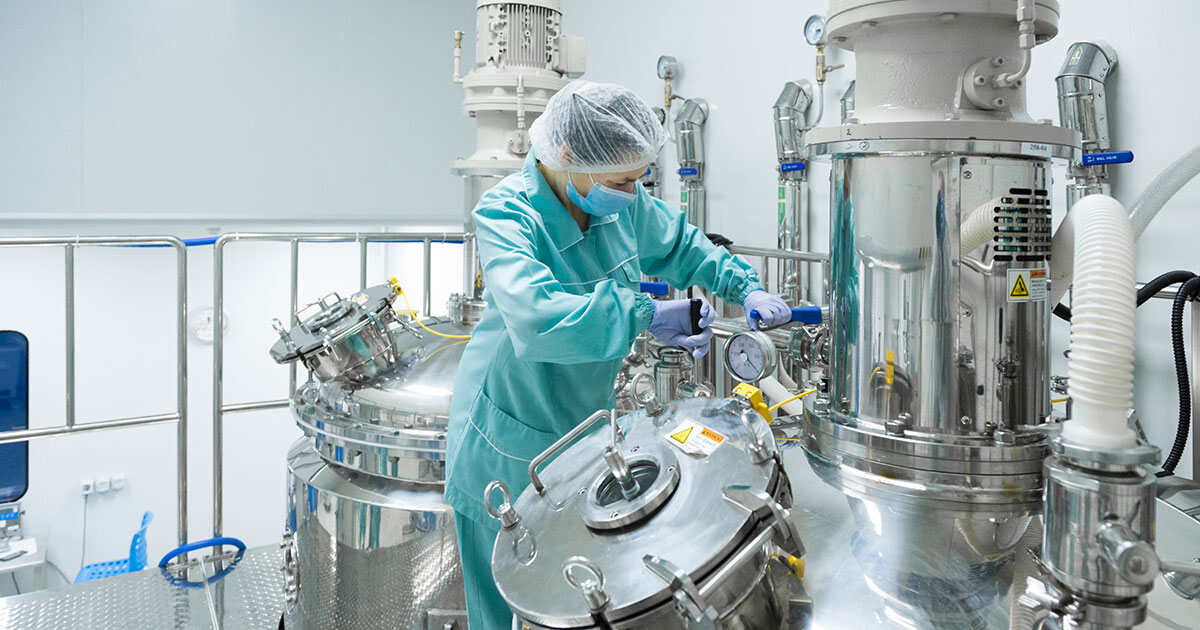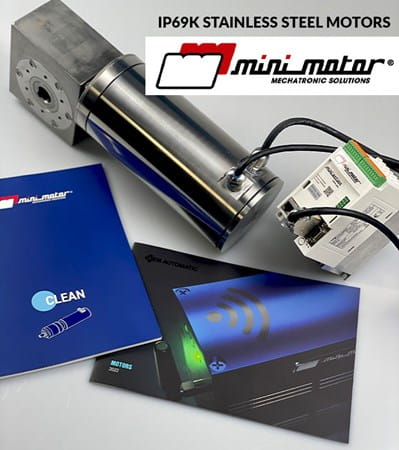Process equipment for the production of pharmaceuticals
What would the world possibly do without an effective and fast-moving pharmaceutical industry? The most crucial industry known must ensure they have the best practices in place, not just to create financial gain and a running industry, but to serve the vital purpose of saving lives.
This highly innovative and driven industry focuses on constant research and development, which requires the most effective practices to increase quality, efficiency and reliability. This article aims to offer advice on optimising your pharmaceutical production line to be more streamlined and efficient.
The global market for contract pharmaceutical manufacturing services is predicted to grow from $89.7 billion in 2021 to $110.8 billion by 2026. For the industry to grow, producers must invest in effective process management solutions, which we explore below.
COVID-19 effects on the pharmaceutical industry
It is common knowledge that the covid-19 pandemic has put enormous pressure on the pharma industry. Today, the industry is slowly regaining its control but still faces significant effects from the pandemic.
Supply chain disruption has affected the manufacturing industry during Covid-19. These disruptions have emerged because of severe weaknesses in systems that are not designed to cope with pandemics. Processes need to be in place that prepares manufactures and their supply chains for future uncertainty and fluctuations in demand.
Organisations have stopped a great deal of relatively low-value work during the COVID-19 slowdown, developing ways to be more efficient and productive. Mckinsey theories suggest that automating manufacturing processes in warehouses play an important role in the future, increasing data availability and, more importantly, decreasing reliance on manpower. This will help to tackle any sudden increase in demand and create clearer analytics and assessment.
Previously, process management systems were always performed manually for pharmaceutical production lines. However, automated production lines are now essential as the demand for accuracy, reliability, and efficiency increases.
Blog
How to combat the challenges in pharmaceutical process systems
Many challenges exist within the pharmaceutical industry, and more so post-covid. Below we explore some of the challenges presented by organisations worldwide, such as the European Commission. We then discuss how pharma production companies can implement specific process management solutions to offset these challenges.
Challenge 1: Greener medicines
The European Commission has stated its four main strategies for the future, and one of them is the development of greener medicines. This would involve eliminating wastage, increasing efficiency, and utilising materials. This poses a significant challenge, as creating a greener society is a long-term strategy that takes substantial changes and is not always top of the list of priorities.
How can production companies make their production greener?
A step towards a greener production line starts with the use of Pigging systems. Pigging systems clean, inspect and maintain pipelines without having to shut down the system for long periods.
How will a pigging system make my production line green?
- Minimises waste of raw materials, recovering up to 95% of product from pipelines
- Reduces consumption of energy, water and cleaning agent
You can create a greener production line whilst also saving money as the return on investment is 1 year!
Challenge 2: Efficiency and innovation in the pharma industry
In the top 10 of industry trends and innovation in 2021, flexible production is at 13%. Research sources say that multi-purpose technology is gaining popularity as it reduces downtime and increases productivity & reduces waste by eliminating complex steps like cleaning and validation between separate production stages.
How can a production line become more efficient through innovation?
To achieve flexible and efficient production, you can optimise your production line with multi-purpose and multi-functional equipment such as twin-screw pumps, which can be used to pump a wide range of media and conducts CIP cleaning in one.
Transporting all flow in volumes of 300 m/h, an additional pump for CIP cleaning is not necessary, and time and costs are saved due to the reduced investment. This is an innovation from previous systems, which required additional CIP cleaning equipment.
Butterfly valves are isolation valves for flow control, diverting media whilst also stopping, regulating, and starting flow. Hygienic by design, they can also be installed into compact areas. The use of standard valves can create pressure losses in your production line. Using a hygienic butterfly valve not only controls the flow but eliminates wastage too.
Mixproof valves accommodate two running processes at the same time. An innovative concept was created with two valve seats, each with a "floating" PFA seal in a special slot that makes the valve extremely easy to clean. The ability to use two fluids through the same valve is highly efficient and time-saving.
Challenge 3: Identifying contamination and traceability
Hygiene in the pharmaceutical industry is at a peak. How do you make your pharmaceutical products 100% hygienic? It can be performed in easy steps with hygienic process management solutions. As well as maintaining hygienic standards, there are various certifications involved in proving your hygienic statuses like FDA, 3A and CE certifications.
How to reduce the risk of contamination in your production line?
Pigging systems are mainly beneficial for their hygienic purpose. With the integrated inline cleaning of the pig, it is clean for the next batch and prevents contamination between batches. A pigging system works by cleaning the pipeline with moving pigs using the product's pressure-driven flow on the pipeline, you can watch how a pigging system works here.
Mixproof valves are a must-have within the pharmaceutical production line. Mixproof valves prevent cross-contamination with an integrated leak chamber that detects seal failure, avoiding cross-contamination. A mixproof valve directly achieves the certifications FDA, 3A and CE.
Challenge 4: Product Quality
Product quality has always been an essential factor. Still, there is a need for higher quality products that are tested and made hygienically, reducing the risks of poor quality medicines made using poor processes. Due to Covid-19, the standards of cleanliness has risen in all industries.
How to make sure your production is of the best quality?
For the best production quality, production companies must invest in the best quality hygienic equipment.
Hygienic pressure sensors and gauges are specifically designed for the pharmaceutical industry. They are used to measure the pressure of media within the production process, ensuring the function and efficiency and guaranteeing high-quality results through accurate analytics and assessments.
Temperature sensors and level switches are also recommended to ensure high-quality production lines for highly accurate monitoring, with rapid response times. Process valves ensure the continuous quality of products, including texture, entirety, and fluidity.
With reliable process management equipment development by well-known brands such as Definox, Jung Process Systems and Anderson-Negele, there is no doubt that it will be possible to eliminate future challenges in the industry.
Innovative products will help you keep ahead of the game and can help tackle any climate the pharmaceutical industry faces.
For more information on optimising your pharmaceutical production line, our process management team are on hand to help. Email them at [email protected] or call +44 (0)116 284 9900.
Related Products

Butterfly Valves

.jpeg?mh=450&mw=450&hash=27E2293124F0795A5849E890819BC825)

.jpeg?mh=450&mw=450&hash=1DC35F9F1B8479CD153C10ABF112631A)
